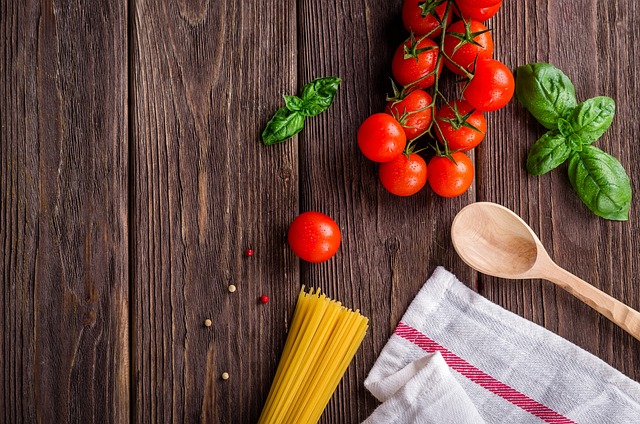-
Table of Contents
- The Role of Artificial Intelligence in Revolutionizing Food Production
- 3D Printing: A Game-Changer in the Food Industry
- Cultured Meat: Paving the Way for Sustainable Protein Sources
- Blockchain Technology: Enhancing Food Traceability and Safety
- Virtual Reality Dining: Exploring Immersive Food Experiences
- Q&A
- Conclusion
The future of food technology is rapidly evolving, bringing about innovative changes in how we eat. With advancements in science, engineering, and sustainability, new technologies are revolutionizing the way we produce, process, and consume food. From lab-grown meat to vertical farming and personalized nutrition, these innovations have the potential to address global food challenges, improve food safety, and enhance the overall dining experience. In this article, we will explore some of the key innovations that are shaping the future of food technology and transforming our relationship with food.
The Role of Artificial Intelligence in Revolutionizing Food Production
The Role of Artificial Intelligence in Revolutionizing Food Production
In recent years, artificial intelligence (AI) has emerged as a powerful tool in various industries, and the food production sector is no exception. With its ability to analyze vast amounts of data and make predictions, AI is revolutionizing the way we grow, process, and consume food. From precision farming to personalized nutrition, AI is transforming the future of food technology.
One of the key areas where AI is making a significant impact is in precision farming. By using sensors, drones, and satellite imagery, AI can collect real-time data on soil conditions, weather patterns, and crop health. This data is then analyzed to optimize irrigation, fertilization, and pest control, resulting in higher crop yields and reduced environmental impact. Farmers can now make data-driven decisions, ensuring that resources are used efficiently and sustainably.
AI is also playing a crucial role in improving food safety and quality. With its ability to detect patterns and anomalies, AI can identify potential risks in the food supply chain. By analyzing data from various sources, such as temperature sensors, RFID tags, and consumer feedback, AI can quickly identify and trace the source of contamination or spoilage. This enables faster recalls and helps prevent foodborne illnesses, ultimately ensuring the safety of consumers.
Furthermore, AI is transforming the way we personalize our diets. With the rise of wearable devices and health apps, individuals are increasingly interested in monitoring their nutrition and making informed choices. AI algorithms can analyze personal health data, such as genetic information, medical history, and dietary preferences, to provide personalized recommendations. This not only helps individuals achieve their health goals but also reduces food waste by ensuring that only the necessary ingredients are purchased and consumed.
In addition to improving food production and safety, AI is also enhancing the consumer experience. Chatbots and virtual assistants powered by AI are becoming increasingly common in the food industry. These AI-powered tools can provide personalized recommendations, answer customer queries, and even take orders. By leveraging natural language processing and machine learning, these virtual assistants can understand and respond to customer needs, providing a seamless and efficient experience.
Moreover, AI is driving innovation in the development of alternative food sources. As the global population continues to grow, traditional food production methods may not be sufficient to meet the increasing demand. AI is being used to develop alternative protein sources, such as plant-based and lab-grown meats. By analyzing the molecular structure and nutritional composition of various ingredients, AI can create new food products that are both sustainable and nutritious.
While AI holds immense potential in revolutionizing food production, there are also challenges that need to be addressed. Data privacy and security concerns, as well as ethical considerations, must be carefully managed. Additionally, there is a need for collaboration between AI developers, food producers, and regulatory bodies to ensure that AI technologies are implemented responsibly and in line with industry standards.
In conclusion, artificial intelligence is playing a pivotal role in revolutionizing food production. From precision farming to personalized nutrition, AI is transforming the way we grow, process, and consume food. By leveraging data analytics and machine learning, AI is improving efficiency, safety, and sustainability in the food industry. As we look to the future, it is clear that AI will continue to shape the way we eat, ensuring a more sustainable and personalized food system for generations to come.
3D Printing: A Game-Changer in the Food Industry

The Future of Food Technology: Innovations Changing How We Eat
In recent years, the food industry has seen a surge in technological advancements that are revolutionizing the way we produce and consume food. One such innovation that is making waves is 3D printing. While 3D printing has been around for a while, its application in the food industry is relatively new and holds immense potential.
3D printing, also known as additive manufacturing, is a process of creating three-dimensional objects by layering materials on top of each other. This technology has been primarily used in manufacturing industries to create prototypes and complex structures. However, with advancements in food science and technology, 3D printing is now being used to create edible food items.
The concept of 3D printed food may sound like something out of a science fiction movie, but it is quickly becoming a reality. Imagine being able to design and print your own custom-made meals, tailored to your specific dietary needs and preferences. With 3D printing, this is now possible.
One of the main advantages of 3D printed food is its ability to create intricate and complex shapes that would be difficult to achieve using traditional cooking methods. This opens up a whole new world of possibilities for chefs and food designers to create visually stunning and unique dishes. From intricate chocolate sculptures to personalized cake toppers, the possibilities are endless.
But 3D printing is not just about aesthetics. It also has the potential to address some of the pressing challenges facing the food industry. For instance, one of the biggest concerns in the food industry is food waste. According to the Food and Agriculture Organization of the United Nations, approximately one-third of all food produced for human consumption is wasted. 3D printing can help tackle this issue by using precise measurements and portion control to minimize waste. By printing only the required amount of food, we can reduce the amount of food that goes uneaten.
Another area where 3D printing can make a significant impact is in personalized nutrition. With the ability to print food based on individual dietary needs, 3D printing can help address the growing demand for personalized nutrition. Whether it’s creating meals for people with specific allergies or dietary restrictions, or tailoring meals to meet specific nutritional requirements, 3D printing has the potential to revolutionize the way we approach food and nutrition.
Furthermore, 3D printing can also play a crucial role in addressing food security and sustainability. As the global population continues to grow, there is an increasing need for sustainable food production methods. 3D printing can help by using alternative ingredients and reducing the reliance on traditional farming practices. For example, researchers are exploring the use of insect-based proteins as a sustainable and eco-friendly alternative to traditional meat sources. By using 3D printing technology, these proteins can be transformed into palatable and visually appealing food products.
While 3D printing in the food industry is still in its early stages, the potential it holds is undeniable. From creating visually stunning dishes to addressing food waste and sustainability, 3D printing has the power to transform the way we eat. As technology continues to advance, we can expect to see even more exciting innovations in the field of food printing. The future of food technology is here, and it looks delicious.
Cultured Meat: Paving the Way for Sustainable Protein Sources
The Future of Food Technology: Innovations Changing How We Eat
Cultured Meat: Paving the Way for Sustainable Protein Sources
In recent years, the world has witnessed a growing concern for the environmental impact of traditional livestock farming. As the global population continues to rise, the demand for meat and other animal products is increasing exponentially. However, the current methods of meat production are not sustainable in the long run. This has led to the emergence of a revolutionary technology known as cultured meat, which has the potential to transform the way we produce and consume protein.
Cultured meat, also known as lab-grown or cell-based meat, is produced by culturing animal cells in a laboratory setting. The process involves taking a small sample of animal cells and providing them with the necessary nutrients and conditions to grow and multiply. Over time, these cells develop into muscle tissue, which can then be harvested and processed into meat products.
One of the key advantages of cultured meat is its potential to reduce the environmental impact of traditional livestock farming. Traditional meat production requires vast amounts of land, water, and feed, leading to deforestation, water pollution, and greenhouse gas emissions. In contrast, cultured meat can be produced using a fraction of the resources required for traditional meat production. This means that it has the potential to significantly reduce land use, water consumption, and greenhouse gas emissions associated with meat production.
Furthermore, cultured meat has the potential to address some of the ethical concerns associated with traditional livestock farming. Animals raised for meat often suffer from cramped and unsanitary conditions, as well as inhumane practices such as debeaking and tail docking. Cultured meat eliminates the need for raising and slaughtering animals, thereby reducing animal suffering and promoting more ethical food choices.
Despite its potential benefits, cultured meat is still in its early stages of development and faces several challenges. One of the main challenges is the high cost of production. Currently, the production of cultured meat is expensive due to the complex and resource-intensive process involved. However, with advancements in technology and economies of scale, it is expected that the cost of production will decrease over time, making cultured meat more accessible to the general public.
Another challenge is the acceptance and perception of cultured meat by consumers. Many people have reservations about consuming meat that is grown in a laboratory rather than being derived from traditional animal sources. However, studies have shown that once consumers are educated about the benefits of cultured meat, such as its potential to reduce environmental impact and improve animal welfare, they are more likely to accept and embrace this innovative technology.
In conclusion, cultured meat has the potential to revolutionize the way we produce and consume protein. With its ability to reduce the environmental impact of traditional livestock farming and address ethical concerns, it offers a sustainable and ethical alternative to conventional meat production. While there are still challenges to overcome, such as the high cost of production and consumer acceptance, the future of cultured meat looks promising. As technology continues to advance, we can expect to see more innovations in the field of food technology that will change the way we eat and contribute to a more sustainable and ethical food system.
Blockchain Technology: Enhancing Food Traceability and Safety
Blockchain Technology: Enhancing Food Traceability and Safety
In recent years, the food industry has been facing increasing pressure to ensure the safety and traceability of the products we consume. With concerns about foodborne illnesses, contamination, and fraudulent labeling, consumers are demanding more transparency and accountability from food producers. This is where blockchain technology comes into play, offering a promising solution to these challenges.
Blockchain, originally developed as the underlying technology for cryptocurrencies like Bitcoin, is a decentralized and transparent digital ledger. It allows for the secure and immutable recording of transactions, making it an ideal tool for tracking and verifying the movement of goods. When applied to the food industry, blockchain can revolutionize the way we track and trace the journey of our food from farm to fork.
One of the key benefits of blockchain technology in the food industry is its ability to enhance traceability. By recording every step of the supply chain on a blockchain, it becomes possible to track the origin, processing, and distribution of food products with unprecedented accuracy. This means that in the event of a food safety issue or a product recall, the source of the problem can be quickly identified, minimizing the impact on public health and reducing the economic losses for businesses.
Moreover, blockchain technology can also help combat food fraud. With the ability to verify the authenticity of products, consumers can have confidence that what they are buying is exactly what it claims to be. This is particularly important in industries like seafood, where mislabeling and substitution of species are common practices. By using blockchain, each step in the supply chain can be recorded and verified, ensuring that the product’s origin and quality are accurately represented.
Implementing blockchain technology in the food industry also has the potential to improve food safety. By providing real-time access to information about the conditions in which food is produced, stored, and transported, blockchain can help identify potential risks and prevent contamination. For example, if a batch of produce is found to be contaminated, blockchain can quickly identify the source and allow for targeted recalls, reducing the need for widespread recalls that can be costly and wasteful.
Furthermore, blockchain technology can empower consumers by giving them access to detailed information about the food they consume. By scanning a QR code or using a mobile app, consumers can learn about the origin of the ingredients, the farming practices used, and even the environmental impact of the product. This level of transparency not only helps consumers make more informed choices but also encourages food producers to adopt sustainable and ethical practices.
While the potential benefits of blockchain technology in the food industry are clear, there are still challenges to overcome. One of the main hurdles is the need for collaboration and standardization across the industry. For blockchain to be effective, all participants in the supply chain must be willing to share data and adopt a common framework. Additionally, there are concerns about data privacy and security, as blockchain relies on the sharing of information across multiple parties.
In conclusion, blockchain technology holds great promise for enhancing food traceability and safety. By providing a transparent and immutable record of the supply chain, blockchain can help identify and prevent food safety issues, combat fraud, and empower consumers with information. However, widespread adoption will require collaboration, standardization, and addressing privacy concerns. As the food industry continues to evolve, blockchain technology is poised to play a crucial role in shaping the future of how we eat.
Virtual Reality Dining: Exploring Immersive Food Experiences
The Future of Food Technology: Innovations Changing How We Eat
Virtual Reality Dining: Exploring Immersive Food Experiences
In recent years, the world of food technology has seen remarkable advancements that are revolutionizing the way we eat. One such innovation that is gaining traction is virtual reality dining, which offers a unique and immersive experience for food enthusiasts. By combining the power of virtual reality with culinary expertise, this emerging trend is set to transform the way we perceive and enjoy our meals.
Virtual reality dining takes the concept of a traditional dining experience and elevates it to a whole new level. With the help of virtual reality headsets, diners are transported to a different world where they can not only see but also interact with their food in ways that were previously unimaginable. Imagine sitting at a virtual table in a picturesque countryside, surrounded by lush greenery, as you savor a delectable meal prepared by a renowned chef. The possibilities are endless, and the experience is truly immersive.
One of the key advantages of virtual reality dining is the ability to customize the dining experience according to individual preferences. With the use of virtual reality technology, diners can choose their preferred ambiance, whether it’s a cozy café in Paris or a beachside restaurant in the Caribbean. They can also select the type of cuisine they want to indulge in, ranging from traditional dishes to experimental fusion creations. This level of personalization allows for a truly tailored dining experience that caters to individual tastes and preferences.
Moreover, virtual reality dining offers a unique opportunity for chefs to showcase their creativity and push the boundaries of culinary artistry. By incorporating virtual reality into their culinary creations, chefs can experiment with new flavors, textures, and presentations that would be impossible to achieve in a traditional setting. They can take diners on a gastronomic journey that transcends the limitations of physical space, creating a multi-sensory experience that tantalizes not only the taste buds but also the eyes and ears.
Virtual reality dining also has the potential to address some of the challenges faced by the food industry, such as food waste and sustainability. By simulating the dining experience, virtual reality can help reduce the need for physical ingredients, thereby minimizing food waste. Additionally, it can provide a platform for chefs to explore alternative and sustainable food sources, such as plant-based proteins or lab-grown meat, without compromising on taste or quality. This opens up new avenues for culinary innovation and promotes a more sustainable approach to food consumption.
While virtual reality dining is still in its early stages, it is already making waves in the food industry. Several restaurants and culinary institutes have started experimenting with this technology, offering diners a glimpse into the future of dining. As the technology continues to evolve and become more accessible, we can expect to see virtual reality dining becoming a mainstream trend, with more restaurants and food establishments incorporating it into their offerings.
In conclusion, virtual reality dining is a groundbreaking innovation that is set to transform the way we experience food. By combining the power of virtual reality with culinary expertise, it offers a unique and immersive dining experience that can be tailored to individual preferences. It allows chefs to push the boundaries of culinary artistry and promotes a more sustainable approach to food consumption. As this technology continues to evolve, we can look forward to a future where virtual reality dining becomes an integral part of our culinary landscape. So, put on your virtual reality headset and get ready to embark on a gastronomic adventure like no other.
Q&A
1. What is food technology?
Food technology refers to the application of scientific knowledge and techniques to improve the production, processing, and preservation of food.
2. How is food technology changing the way we eat?
Food technology is introducing innovations such as plant-based meat alternatives, lab-grown meat, and personalized nutrition. These advancements offer new options for consumers, cater to dietary restrictions, and address sustainability concerns.
3. What are some examples of food technology innovations?
Examples include 3D-printed food, smart packaging that monitors freshness, genetically modified crops for increased yield and nutrition, and precision agriculture techniques using drones and sensors.
4. What are the benefits of food technology?
Food technology can enhance food safety, reduce food waste, improve nutritional value, increase food production efficiency, and provide alternative food sources to meet the growing global demand.
5. Are there any concerns or challenges associated with food technology?
Some concerns include potential health risks of genetically modified organisms, ethical considerations surrounding lab-grown meat, and the need for proper regulation to ensure consumer safety and prevent misuse of technology.
Conclusion
In conclusion, the future of food technology is marked by various innovations that are transforming the way we eat. These advancements include the development of alternative protein sources, such as plant-based and lab-grown meats, as well as the use of biotechnology to enhance crop yields and nutritional content. Additionally, advancements in food packaging and preservation techniques are improving food safety and reducing waste. With these innovations, the future of food technology holds great potential to address global food challenges and provide sustainable and nutritious options for consumers.






Leave a Reply